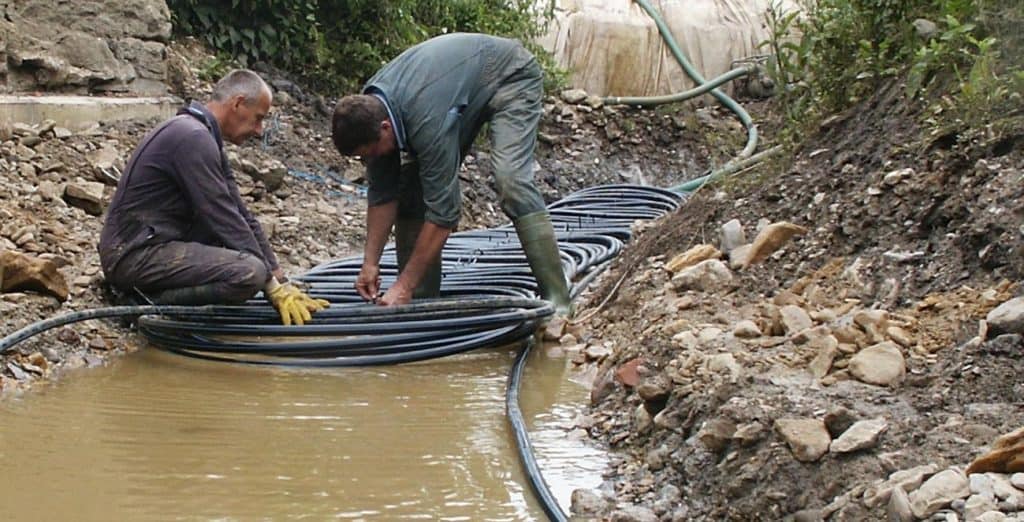Two 50kw plantroom heat pumps manufactured and commissioned by Kensa Heat Pumps, a UK manufacturer of a complete range of ground source and water source heat pumps, were installed into this prestigious project. As part of the Lee Valley park development plans, a lake was to be purpose-built to provide the water into the kayak and white water courses.
A number of energy sources can be used as the heat source for heating buildings such as the Lee Valley White Water Canoe Centre. Most commonly, heat pumps draw heat from the air or from the ground. Other heat sources include water; nearby streams, lakes and other natural water bodies. Any large water source situated close to the proposed building to be heated is an ideal energy source for a heat pump. Using water as the energy source has a number of advantages when compared to air or ground source.
No digging of trenches is required, which significantly reduces installation costs from the outset. Also, the heat transfer rate from water is higher than that in the ground and the water is in close contact with the entire pipe at all times. The flow of water in the lake provides constant energy replacement and the return temperature to the heat pump is generally higher, which in turn increases the coefficient of performance of the heat pumps.
When Kensa Heat Pumps were asked to provide a heating and cooling solution for the Lee Valley Canoe Centre, utilising the purpose built lake as the energy source for the 2no 50kW Plantroom Heat Pumps, was the most compelling solution from a cost saving and CO2 reduction point of view, for all of those involved with the project.
Kensa supplied 30no 50m long slinky ground arrays, which were buried under pea gravel in the header of the lake which feeds the kayak course. The slinkies were buried under the pea gravel to provide protection for the slinkies and to ensure they remained buried under water.
